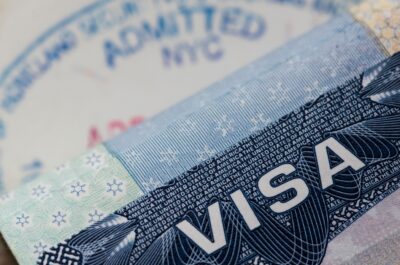The growth of emerging markets in Latin America and Asia offers new opportunities to connect the world through Canada, as well as to attract more travellers to Canada. Canadian airports are well positioned to be connecting points for traffic between Asia and Latin America.
OTTAWA – Streamlined visa processes to make Canada friendlier to foreign visitors could lead to major benefits for the Canadian air transportation industry and the broader economy. This recommendation is one of several outlined in a new Conference Board of Canada report, “Growing Canada’s Economy: A New National Air Transportation Policy“.
“Visa requirements for travel to Canada have a major impact on air travel – a visa requirement typically dampens travel demand to Canada by 30 per cent or more,” said Vijay Gil, Director, Policy Research at the Conference Board and co-author of the report. “While they play an important security role, visa requirements are also a major impediment to air travel because of the direct cost, time required, and general inconvenience involved,” he said.
The air transportation industry in this country generates about $35 billion annually and supports more than 400,000 jobs, but the full potential of the industry is not being realized. The last major changes in air transportation policy took place more than 20 years ago. A new National Air Transportation Policy could both boost the sector’s economic impact and help the industry become more efficient.
Hhighlights
- The air transportation industry directly employs 141,000 workers and supports almost 405,000 jobs across the economy.
- Visa requirements typically dampen travel demand to Canada by 30 per cent or more.
- The growth of emerging markets in Latin America and Asia offers new opportunities to connect the world through Canada, as well as to attract more travellers to Canada. Canadian airports are well positioned to be connecting points for traffic between Asia and Latin America.
The economic “footprint” of the industry is based on the Conference Board’s analysis of direct, indirect and induced effects. The air transportation industry directly employs 141,000 workers and supports almost 405,000 jobs across the economy. Along with generating almost $35 billion in gross domestic product, the industry contributes over $12 billion to federal and provincial treasuries, including over $7 billion in taxes.
“Aviation fuels Canada’s economy in ways not everybody realizes right away,” said Daniel-Robert Gooch, President of the Canadian Airports Council. “This report outlines ways to help us maintain strong and vibrant air carriers and airports which are important not only for the industry, but also for the Canadian economy and job growth,” he said.
“Canada’s aviation sector creates jobs and economic activity across a wide spectrum of industries, links communities across Canada and expands markets for international investments. While these benefits are significant, the aviation sector could be contributing even more given its integral role in driving our economy, trade and tourism,” said Marc-Andre O’Rourke, Director of the National Airlines Council of Canada.
Canadians still fly less than might be expected, especially considering Canada’s vast geography. U.S. airports handle approximately 2.3 enplaned passengers per capita per year; the equivalent figure for Canadian airports is 1.6.
Over the last 10 years, tourism in Canada (involving both residents and visitors) has declined significantly, falling from 8th place to 18th place in global rankings. Perceived expensive air travel and unfriendly visa processes are two of the reasons for that decline. Canada also has a significant international travel deficit ($16 billion), suggesting that while Canadians are travelling abroad, Canada is failing to attract a proportionate share of international visitors.
The Conference Board report outlines elements of a new National Air Transportation Policy based on three broad areas: providing economic and social benefit to Canadians, border and security facilitation, and enhancing the industry’s competitiveness.
In addition to streamlining visa requirements, some of the other recommendations and policy considerations include:
- Enhancing transit without visa programs, allowing Canadian airlines and airports to better compete for connecting international travellers;
- Considering reforms that would help airports increase their commercial revenues, such as Arrivals Duty Free;
- Examining the full liberalization of international air cargo markets;
- Making the current federal infrastructure program for small and medium airports more inclusive and appropriately funded;
- Defining clearly the role and performance of the Canadian Air Transport Security Agency and tying its funding more formally to Air Transport Security Charge revenues;
- Encouraging all provinces to exempt transborder and international flights from aviation fuel taxes; and
- Funding some security costs from non-user sources.
The report was jointly written by The Conference Board of Canada and SLI Airports and Aviation Group. Financial support was provided by the Canadian Airports Council and the National Airlines Council of Canada.
Photo caption: Toronto, Canada.
Theodore is the Co-Founder and Managing Editor of TravelDailyNews Media Network; his responsibilities include business development and planning for TravelDailyNews long-term opportunities.






























































































































































































